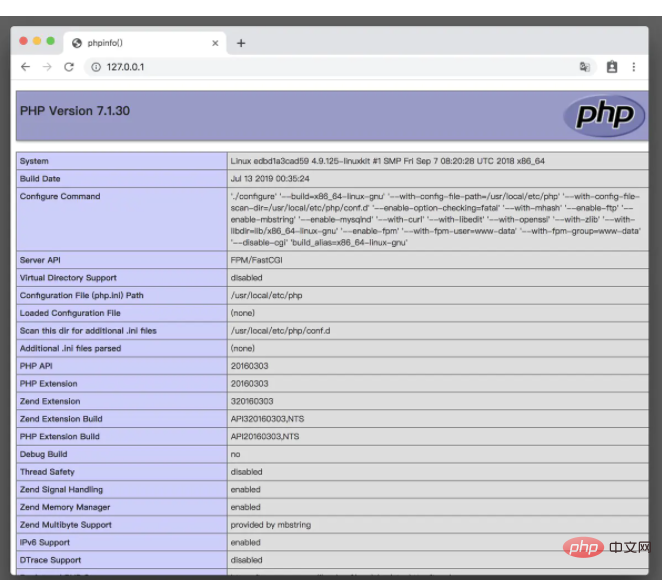
How to install php7 with docker: 1. Install Docker; 2. Install Ngnix image and php image; 3. Create relevant folders and use them for mapping respectively; 4. Check whether the php environment is by creating index.php The installation is successful.

The operating environment of this article: Windows7 system, PHP7.1.3, Dell G3.
How to install php7 with docker?
Docker builds a Php7 development environment in seconds
I have always heard that Docker is more powerful, but I have never understood it. Today I am beeping After taking an introductory course on Libili, I found that it was like a new world. It was too late to understand the power of Docker. This article about using Docker to build a php7 environment requires some introductory knowledge. Start below.
First install Docker, whether you are Windows, Linux, or MocOS. Install Docker on your own.
Just visit https://hub.docker.com, which is a large image warehouse.
Input:
docker pull nginx
docker pull php:7.1.30-fpm
Create several folders to map: website root directory, nginx configuration file, log file
mkdir -p ~/nginx/www ~/nginx/logs ~/nginx/conf
Create new folders in the new www directory: index.php Used to detect php Whether the environment is set up successfully:
<?php phpinfo(); ?>
Create a new one under the nginx configuration file directory conf: test-php.conf, the suffix is .conf that is Can:
server {
listen 80;
server_name localhost;
location / {
root /usr/share/nginx/html;
index index.html index.htm index.php;
}
error_page 500 502 503 504 /50x.html;
location = /50x.html {
root /usr/share/nginx/html;
}
location ~ \.php$ {
fastcgi_pass php:9000;
fastcgi_index index.php;
fastcgi_param SCRIPT_FILENAME /www/$fastcgi_script_name;
include fastcgi_params;
}
}This is the most common default configuration of php, just default.
docker run --name myphp7 -v ~/nginx/www:/www -d php:7.1.30-fpm
docker run --name php-nginx -p 80:80 -v ~/Documents/dock/nginx/www:/usr/share/nginx/html -v ~/Documents/dock/nginx/conf:/etc/nginx/conf.d --link myphp7:php -d nginx
This is the specified port, website root directory, and website configuration file directory. In fact, there is no website log directory specified. I don’t know about you. Did you see it, hahaha!
Enter docker ps and see:

Visit: 127.0.0.1

Of course, this is a completely smooth result. It requires continuous attempts in the early stage. I just tried a lot of pitfalls to understand some of the details. . After understanding it, I found that Docker deployment is really convenient and fast, and the sandbox mechanism is very clean.
Dig a small hole and continue to study how Flask uwsgi nginx needs to be deployed using docker.
Recommended learning: "PHP Video Tutorial"
The above is the detailed content of How to install php7 in docker. For more information, please follow other related articles on the PHP Chinese website!
 The difference between k8s and docker
The difference between k8s and docker
 What is the difference between php5 and php7
What is the difference between php5 and php7
 What is the difference between php7 and php8
What is the difference between php7 and php8
 What are the methods for docker to enter the container?
What are the methods for docker to enter the container?
 What should I do if the docker container cannot access the external network?
What should I do if the docker container cannot access the external network?
 What is the use of docker image?
What is the use of docker image?
 delete an element from js array
delete an element from js array
 How to vertically center div text
How to vertically center div text